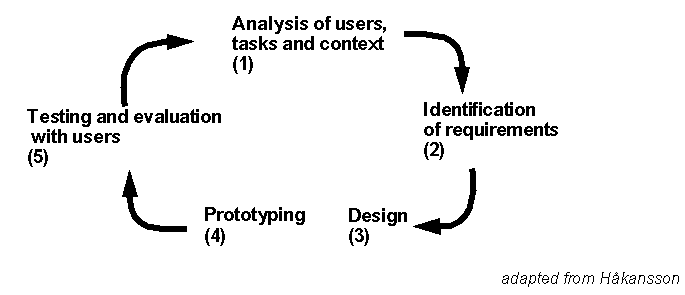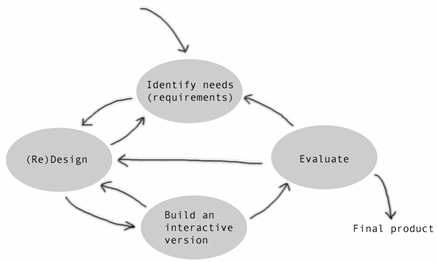Participatory design: Difference between revisions
Jump to navigation
Jump to search
m (→References) |
(using an external editor) |
||
| Line 3: | Line 3: | ||
== Definition == | == Definition == | ||
Participatory or user-centred design: | |||
* involves users as much as possible so that they can influence it | |||
* integrates knowledge and expertise from other disciplines than just IT | |||
* is highly iterative so that testing can insure that design meets users' requirements | |||
[[Image:Participatory-design.png]] | |||
Preece, Rogers et Sharp argue for a similar model: | |||
[[Image:Participatory-design2.png]] | |||
== References == | == References == | ||
Revision as of 10:19, 3 May 2006
Definition
Participatory or user-centred design:
- involves users as much as possible so that they can influence it
- integrates knowledge and expertise from other disciplines than just IT
- is highly iterative so that testing can insure that design meets users' requirements
Preece, Rogers et Sharp argue for a similar model:
References
Kensing, F., J. Simonsen, and K. Bödker (1998): "MUST - a Method for Participatory Design", Human-Computer Interaction, Vol. 13, No. 2, Lawrence Erlbaum Associates, Inc., pp. 167-198.

